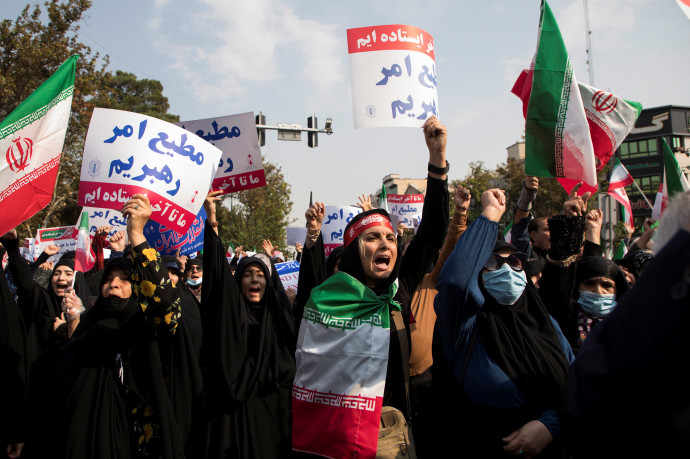The killing of Mahsa Amini 40 days ago set off protests, first in western Iran’s Kurdistan Region and eventually throughout the country. There were reported massacres, including in the Baloch region of southeast Iran, but the regime has actively tried to prevent the protests from growing.
To do this, it has resorted to a complex series of tactics. The regime fears a major uprising and has been trying to tone down the clampdown on the protesters. For some reason, the Iranian leadership views these protests as being different from ones that have taken place in the past. They are not about economics or poverty, but rather, they take issue with the very underpinnings of the theocratic regime.
The regime has sent out riot police, cut off the Internet and detained protesters. It has armed police with less-lethal weapons than usual, such as paintball guns. Some of the protests, such as the ones that took place at universities, were not shut down as swiftly. All the while, the West has put in place a variety of new sanctions.
Overall, Iran’s government appears to have weathered the storm and is putting out the message that it will try to rein in the protests within the next few weeks. President Ibrahim Raisi said the government wants to discuss the university protests. This may sound conciliatory, but he has also said there are various “narratives.”
The use of these terms, such as “discuss” and “narratives,” would seem to imply the government is taking the protests seriously and understands that the anger of the people cannot simply be beaten out.

The contradictory tone of the Iranian regime and the messaging that seems to admit governmental errors, along with threats by the Islamic Revolutionary Guard Corps to suppress the protests, seem to signal that while the IRGC may not have been able to intervene as forcefully as it would have liked in the 40-day mourning period, it now has a free hand.
Iranian regime fears the country will unite against them
It can also represent a dispute within the regime over the best course of action to take next. However, it would be wrong to portray this as meaning there are “moderate” voices within the regime.
The leadership today is not moderate, but even its more extreme personalities realize the need to avoid provoking larger uprisings in Kurdistan, Baloch and other regions of the country. This is because the regime doesn’t want a swath of the country to be provoked and united against it.
Furthermore, the regime has sought to downplay the deaths of protesters.
For instance, the death of Nika Shahkarami, 16, who was killed in late September, is another incident that could spark more protests.
“Iranian authorities claimed Nika’s body was found at the back of a courtyard on the morning of September 21,” CNN reported. “Her mother wasn’t given access to identify her until eight days later. CCTV footage released by the authorities timestamped just after midnight as September 20 became September 21 showed the figure of a masked person they said was Nika entering a building that was uninhabited and still under construction in Tehran.”
“Dozens of videos and eyewitness accounts obtained exclusively by CNN indicate that Nika appears to have been chased and detained by Iranian security forces that night,” the report said.
Iran’s regime disputes this and has been consistent in its attempts to disprove the claims. It’s clear that the regime is worried that every incident where its security forces kill young women could lead to greater protests.
That is why it is so keen to deny what happened. This is a shift in tactics from the past, where the regime would simply suppress protesters or not comment on allegations regarding its brutality.
